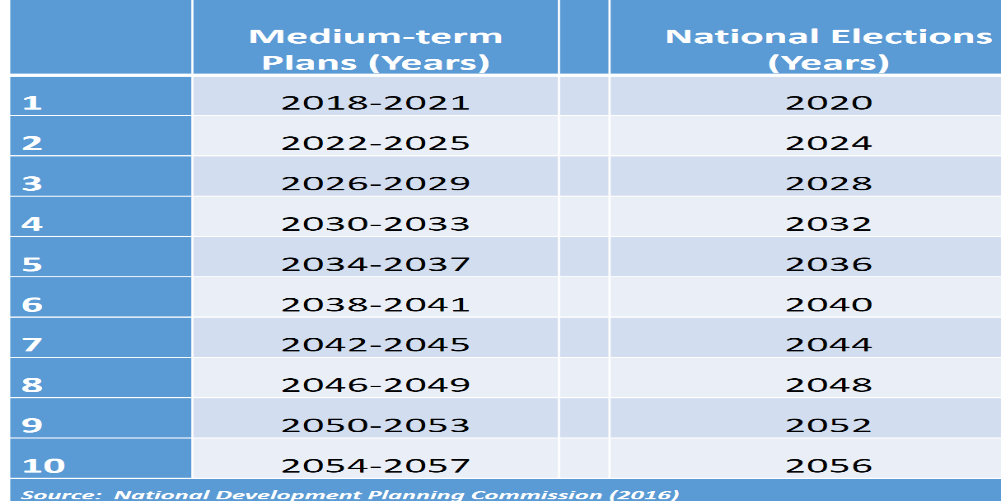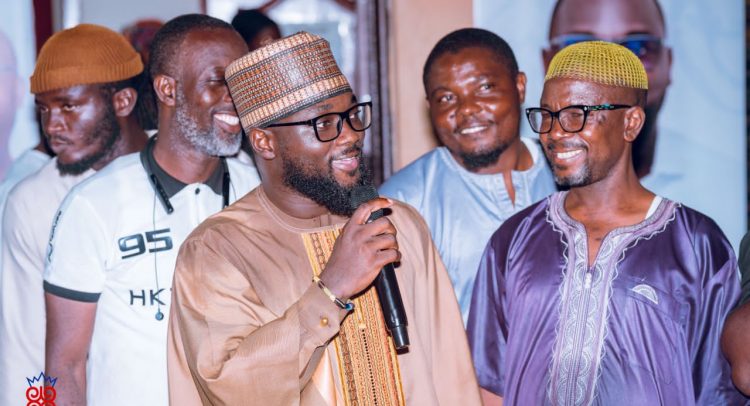
As the economy struggles through its worst crisis in living memory, Ghanaians have increasingly been calling for a long-term national development plan to guide the policies of successive governments and provide stability and resilience in economic growth.
As a result, the “40-Year Development Plan,” which was once dismissed by critics as “too long” and a threat to political party manifestos, has gradually won favour among a restless public desperate for answers and relief.
Perhaps, a little history would put the plan – and its fate – in perspective.
The official name of what is popularly known as the 40-Year Development Plan was Black Star Rising: Long-term National Development Plan of Ghana – 2018-2057, spanning 40 years and culminating in the 100th anniversary of Ghana’s political independence from Britain.
It is common practice for nations to align their development plans with important dates in their lives. Kwame Nkrumah’s Seven-Year Development Plan, for example, was originally five years but was extended to 1970 to coincide with the 10th anniversary of Ghana becoming a republic, having rejected the queen of England as head of state in 1960. His dream of using the occasion to showcase Ghana’s post-independence achievement, however, was dashed by the coup of 1966.
In the case of the 40-Year Development Plan, there was an added element of fate: Under the 4th Republic, a new government inherits the last year of the preceding government’s 4-year medium-term development plan (which overlaps with the year after every election) in order to foster continuity and also give the new government time to translate its manifesto into an implementable plan. Hence, no matter who won the 2016 election, the next medium-term development plan was going to start in 2018 (not 2017) and end in 2021, the year after the next election. Between 2018 and 2057, with or without a long-term plan, Ghana was going to prepare 10 4-year medium-term plan for a total of 40 years, accompanied by 10 presidential elections between 2020 and 2056 (See the table below). The 40-year Development Plan only provided context, direction, and vision based on our collective fate.
The preparation of the Plan by the National Development Planning Commission (NDPC) took over two years of comprehensive reviews of Ghana’s political and economic histories to understand how we evolved from independent, sometime-warring, states into a unified state fighting not each other but a common enemy of under-development. Besides reviews, the Commission also worked with six political parties to consult extensively around the country with a wide range of groups, including students, traditional leaders, business associations, religious leaders, and other civic organisations. Notable personalities, including the then-sitting president, John Mahama, two former presidents (J. J. Rawlings and J. A. Kufuor), the Speaker of Parliament, the Chief Justice, and the newly elected president, Nana Akufo-Addo, were also consulted.
President Akufo-Addo’s pledge to be guided by the Plan, however, was soon undermined by hostile statements and ridicule by some of his appointees. One decided to re-write the Plan, under a new name, “Ghana@100”, while another chose to replace it somehow with a “charter” called Ghana Beyond Aid. In the end, only fragments of the Plan found expression in an inchoate national development agenda. As a result, core initiatives were ignored and critical targets missed. For example, the Plan recommended a reduction in electricity distribution losses from 24% to 12% by 2021 and further to 5% by 2029. Instead, losses increased to 29.7% in 2021 and have almost certainly increased significantly since then. Similarly, the target of increasing electricity consumption per capita, a key indicator of economic growth, from 348 kWh per capita to 850 kWh per capita by 2021 fell short by 302 kWh per capita, and has been declining, worsened by the current challenges in the electricity sector.
Recently, the Planning Commission commenced a process to revise the plan to reflect changed circumstances since 2018, a commendable idea. However, it wants to change the name (yet again) to “Long-term National Development Perspective Framework,” to be “popularly referred to as Vision 2057”. This is regrettable because the choice of name for the Plan was discussed extensively at the time of its preparation and reported cogently in the Plan as follows:
“All long-term plans are inherently frameworks (or vision documents) that guide the preparation and implementation of operational plans, both medium and short term. In popular usage, however, and for effective communication, the word “plan” is often used inter-changeably with “framework” or “vision”. In 2011, Parliament passed the Petroleum Revenue Management Act, (Act 815). Aspects of this law refer to a “long-term plan” [to be developed] for Ghana. What is being prepared, though called a “plan”, will be a framework or vision document to guide successive governments in the preparation of their medium-term plans between 2018 and 2057.” In other words, the 40-Year Development Plan is essentially a framework to guide medium-term planning. Why the duplication?
It has taken the public nearly 10 years to get used to the name, “40-Year Development Plan.” What value is to be gained by suddenly changing it to something entirely different, even confusing, when there are more pressing issues facing the Plan, like the various missed targets and the imperative to redress those issues expeditiously?
What is in a name, when we have a distressed economy to rebuild?
—–
The author, Nii Moi Thompson, was the director-general of the National Development Planning Commission when the 40-Year Development Plan was prepared.
The post Nii Moi Thompson writes: What is in a name? The ’40-year development plan’ revisited appeared first on Citinewsroom - Comprehensive News in Ghana.
Read Full Story




















Facebook
Twitter
Pinterest
Instagram
Google+
YouTube
LinkedIn
RSS